More than 52 acres of timber had to be removed to regain Transport Canada certification

With an annual average rainfall of 1,498mm, Bella Coola is known for its lush foliage and towering trees. This abundant flora inadvertently limited air access to the valley and threatened transportation routes out of one of the most remote areas in B.C. After decades of growth, the trees surrounding Bella Coola Airport’s runway created obstacles, the tallest being a 52 metre Sitka Spruce, that was tall enough that some planes could no longer land in the narrow valley where the airport sits.
The height and the location of the trees was such a hindrance that their removal was listed as a primary concern to the long-term sustainability of the airport in the Bella Coola Airport Master Plan 2016. Clearance restrictions imposed onto aircraft by the trees forced Pacific Coastal Airlines, who provide daily flights into the Bella Coola Valley, to operate at 60–80% capacity.
Throughout 2017 the airport underwent a $380,700.00 project to remove the looming giants and Northern Development was there to help with much needed funding. Many of the trees were repurposed for a variety of uses and other lumber was sold or kept for future projects. Members of the Nuxalk First Nation came and stripped the bark from suitable cedars to be used for cultural purposes. Other wood was donated or sold as firewood or to local residents to use in milling operations. The areas that had trees removed were intentionally planted with grass and trees.

Members of the Nuxalk First Nation stripping bark from cedar trees.
“We are trying to establish grass for the most part because it is the most cost effective to maintain for the long term and the safest for planes,” explained David Flegel, project manager. “We did plant an area near the west end with 300 special conifers that will be managed for future Christmas Trees, that the [Central Coast Regional District] hopes fundraising groups can cut trees for sale in the community… we are hopeful that some of the areas… will become more attractive to song birds and a few birds of prey. The birds of prey are helpful because they keep a bit of fear in some of the gulls that tend to hang around the airfield when the salmon are spawning in the nearby Bella Coola River and channels.”
Air access to Bella Coola and its surrounding area is vital for the well-being of the valley. Stakeholder consultations that were done prior to the completion of the Bella Coola Airport Master Plan indicated that there is growing tourism and a limited capacity to provide adequate services for visitors. The removal of the trees enables aircraft to increase their passenger capacity and carry more people into the area.
Residents of Bella Coola, the Nuxalk Nation and the region also benefit from reliable air transportation. Emergency management practices and healthcare both require reliable modes of transport to larger centres such as Vancouver. Regular flights also have positive effects on the well-being of residents and those considering moving to the area.
Northern Development contributed $95,175 to the project through its Economic Diversification Infrastructure program. The program provides grant funding to support major infrastructure projects in order to strengthen the local economy. The program supports capital investments or public multi-use facilities that drive revenue and job creation and provide a long-term asset for communities throughout central and northern B.C. Since the completion of the project, the scheduled flights in and out of Bella Coola continue to be consistently full or near full.

Grizzly bear supervising obstacle measurement.



